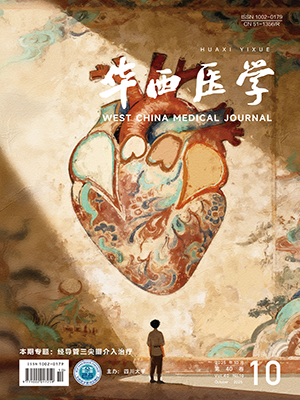| 1. |
Mesa D, Ruiz M, Delgado M, et al. Preva lence of patent foramen ovale determined by transesophageal echocardiography in patients with cryptogenic stroke aged 55 years or older. Same as younger patients[J]. Rev Esp Cardiol, 2010, 63(3):315-322.
|
| 2. |
González-Alujas T, Evangelista A, Santamarina E, et al. Diagnosis and quantification of patent foramen ovale. Which is the reference technique? Simultaneous study with transcranial Doppler, transthoracic and transesophageal echocardiography[J]. Rev Esp Cardiol, 2011, 64(2):133-139.
|
| 3. |
Komar M, Olszowska M, Przewłocki T, et al. Transcranial doppler ultrasonography should it be the first choice for persistent foramen ovale screening?[J]. Cardiovasc Ultrasound, 2014, 12:16.
|
| 4. |
Zito C, Dattilo G, Oreto G, et al. Patent foramen ovale:comparison among diagnostic strategies in cryptogenic stroke and migraine[J]. Echocardiography, 2009, 26(5):495-503.
|
| 5. |
Agustin SJ, Yumul MP, Kalaw AJ, et al. Effects of posture on right-to-left shunt detection by contrast transcranial doppler[J]. Stroke, 2011, 42(8):2201-2205.
|
| 6. |
Shariat A, Yaghoubi E, Nemati R, et al. Comparison of agitated saline mixed with blood to agitated saline alone in detecting right-to-left shunt during contrast-transcranial Doppler sonography examination[J]. Acta Neurol Taiwan, 2011, 20(3):182-187.
|
| 7. |
Droste DW, Jekentaite R, Stypmann J, et al. Contrast transcranial Doppler ultrasound in the detection of right-to-left shunts:comparison of Echovist-200 and Echovist-300, timing of the Valsalva maneuver, and general recommendations for the performance of the test[J]. Cerebrovasc Dis, 2002, 13(4):235-241.
|
| 8. |
Basic identification criteria of Doppler microembolic signals. Consensus Committee of the Ninth International Cerebral Hemodynamic Symposium[J]. Stroke, 1995, 26(6):1123.
|
| 9. |
Jauss M, Zanette E. Detection of right-to-left shunt with ultrasound contrast agent and transcranial Doppler sonography[J]. Cerebrovasc Dis, 2000, 10(6):490-496.
|
| 10. |
TelmanG, Yalonetsky S, Kouperberg E, et al. Size of pfo and amount of microembolic signals in patients with ischaemic stroke or TIA[J]. Eur J Neurol, 2008, 15(9):969-972.
|
| 11. |
杜微, 宋晓南, 杨戈, 等. 先天性卵圆孔未闭与缺血性卒中的最新研究进展[J]. 中风与神经疾病杂志, 2012, 29(7):669-672.
|
| 12. |
Calvet D, Mas JL. Closure of patent foramen ovale in cryptogenic stroke:a never ending story[J]. Cerr Opin Neurol, 2014, 27(1):13-19.
|
| 13. |
Overell JR, Bone I, Lees KR. Interatrial septal abnormalities and stroke:a meta-analysis of case-control studies[J]. Neurology, 2000, 55(8):1172-1179.
|
| 14. |
杨方, 韩军良. 卵圆孔未闭所致脑栓塞1例报告[J]. 中国卒中杂志, 2014, 9(7):600-604.
|
| 15. |
Berthet K, Lavergne T, Cohen A, et al. Significant association of atrial vulnerability with atrial septal abnormalities in young patients with ischemic stroke of unknown cause[J]. Stroke, 2000, 31(2):398-403.
|




